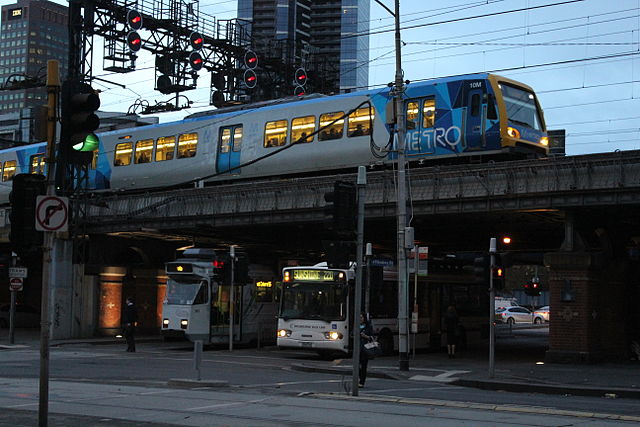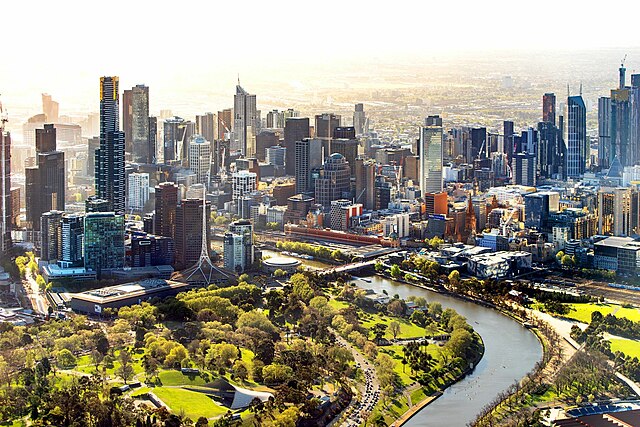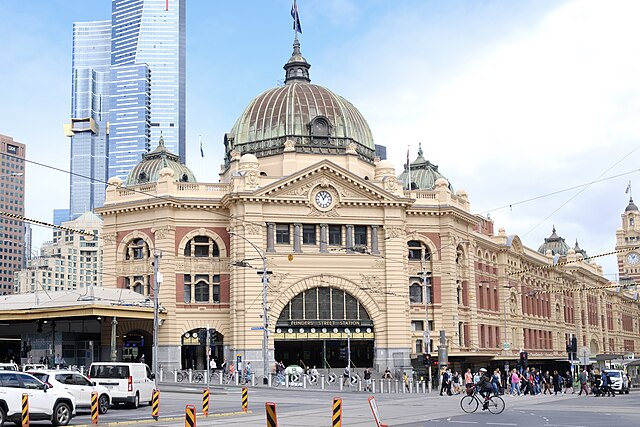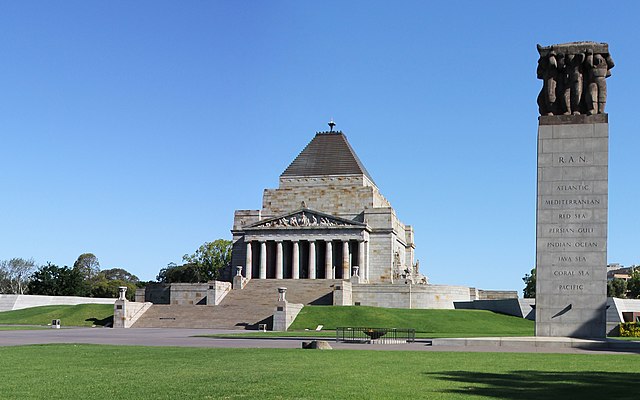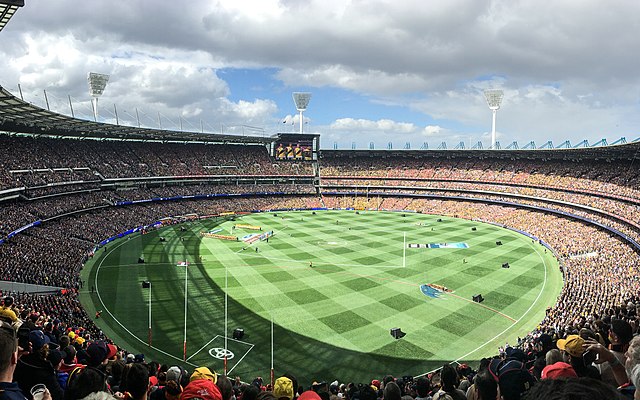Transport in Melbourne, the state capital of Victoria, Australia, consists of several interlinking modes. Melbourne is a hub for intercity, intracity and regional travel. Road-based transport accounts for most trips across many parts of the city, facilitated by Australia's largest freeway network. Public transport, including the world's largest tram network, trains and buses, also forms a key part of the transport system. Other dominant modes include walking, cycling and commercial-passenger vehicle services such as taxis.
Yarra Trams Z-class tram beside a Melbourne Bus Link Scania bus, with a Metro Trains X'Trapolis 100 passing above
Southern Cross Station
A Ventura bus operating route 670 in Melbourne's Eastern suburbs.
D1-class tram operated by Yarra Trams
Melbourne is the capital and most populous city of the Australian state of Victoria, and the second-most populous city in Australia. Its name generally refers to a 9,993 km2 (3,858 sq mi) metropolitan area also known as Greater Melbourne, comprising an urban agglomeration of 31 local municipalities, although the name is also used specifically for the local municipality of City of Melbourne based around its central business area.
Image: Melburnian Skyline
Image: Flinders Street Station Melbourne March 2021
Image: Shrine of Remembrance 1 (cropped)
Image: 2017 AFL Grand Final panorama during national anthem (cropped)

